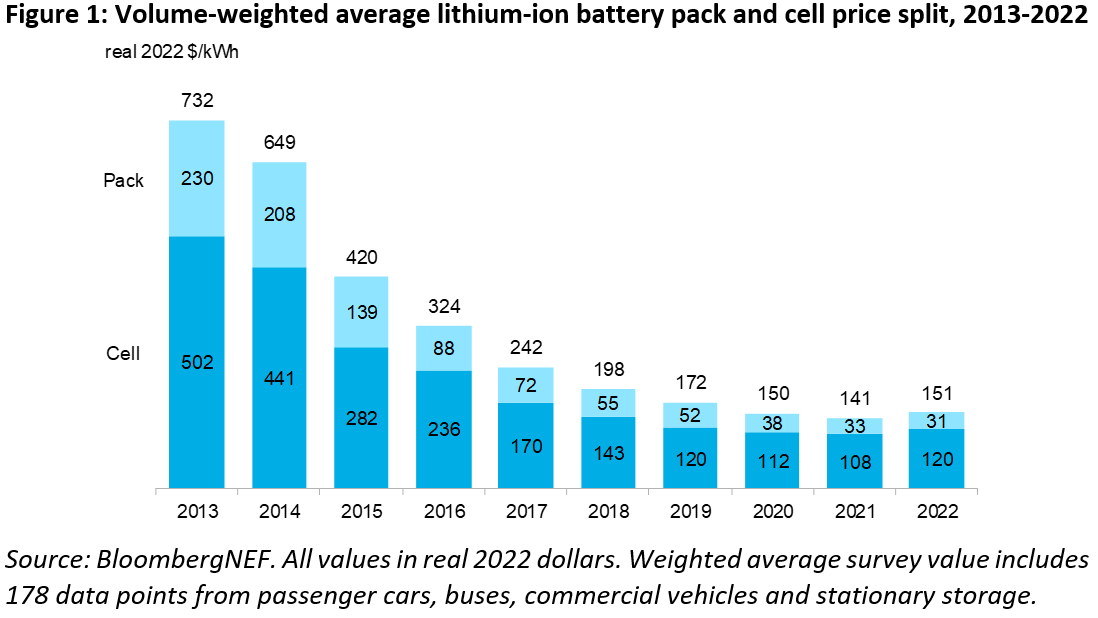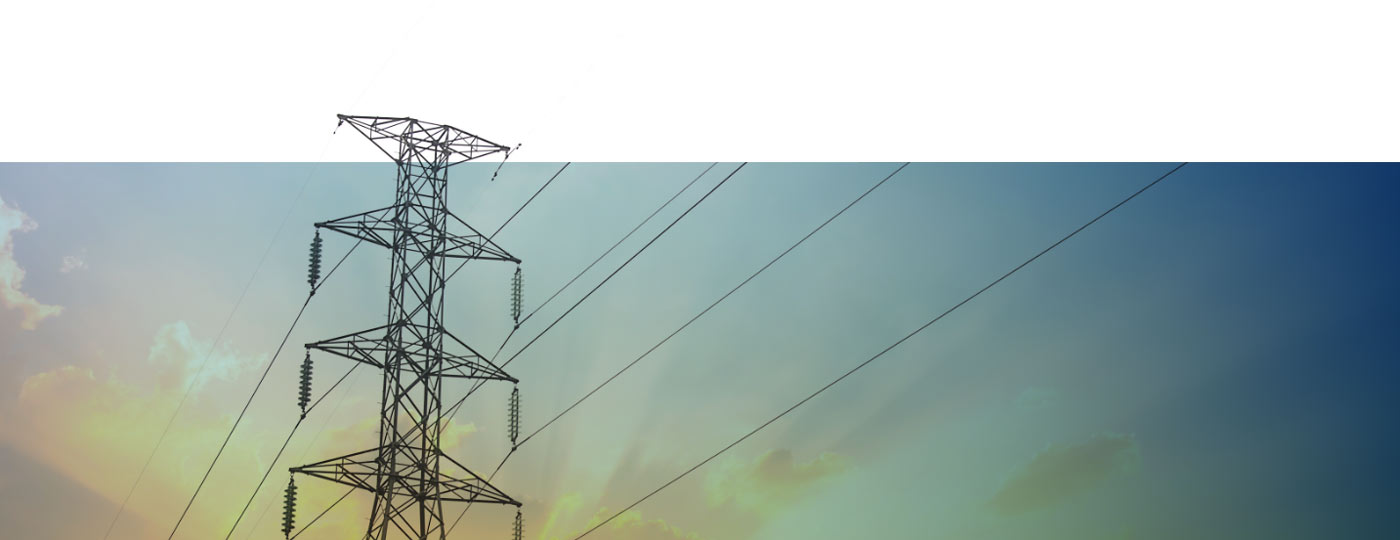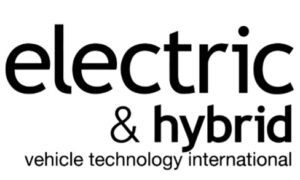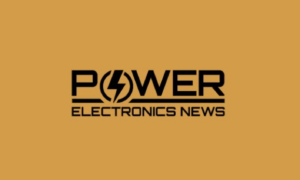
Last week Bloomberg NEF released their 2022 battery pricing update, and the news confirmed what everyone already knew–for the first time ever, lithium-ion battery prices went up instead of down. Here’s are some of the highlights:
- Volume-weighted average prices for lithium-ion battery packs across all sectors have increased 7% from last year in real terms to $151 / kWh.
- Battery electric vehicle (BEV) packs were $138/kWh on a volume-weighted average basis.
- At the cell level, average BEV prices were $115/kWh.
- This indicates that on average, cells account for 83% of the total pack price.
- LFP cells were 20% cheaper than NMC, however, LFP pack prices rose 27%
BNEF now expects average pack prices to rise slightly in 2023 to $152 / kWh (in real 2022 dollars), but they should fall below $100/kWh by 2026, two years later than earlier anticipated. The firm’s Yayoi Sekine stated “Demand will reach 603GWh in 2022, which is almost double that in 2021. Scaling up supply at that rate of growth is a real challenge for the industry, but investment in the sector is also rising rapidly and technology innovation is not slowing down.”
So what does that mean for consumers? EVs will continue to be out of reach for most drivers, grid storage deployments will slow, and the move away from fossil fuels will take longer. There is, however, a silver lining. The longer lithium-ion prices stay high, the more incentive OEMs and integrators have to look for lower-cost, non-lithium alternatives. Safer, lower-cost, low-performance non-lithium options are available, primarily targeting utility-scale long-duration storage. However, these technologies are large and bulky, making them unusable for automotive and maritime applications.
By using readily available, inherently non-flammable and non-toxic materials, we’re working to deliver performance comparable with lithium ion at a much lower cost—something no other technology can do. We’re partnering with OEMs and integrators in the EV, stationary / grid storage, and maritime / marine industries, with a goal of beta testing in 2023 and high-volume production in 2025. Interested in how our low-cost, non-flammable cells might work for your applications? Get in touch!





